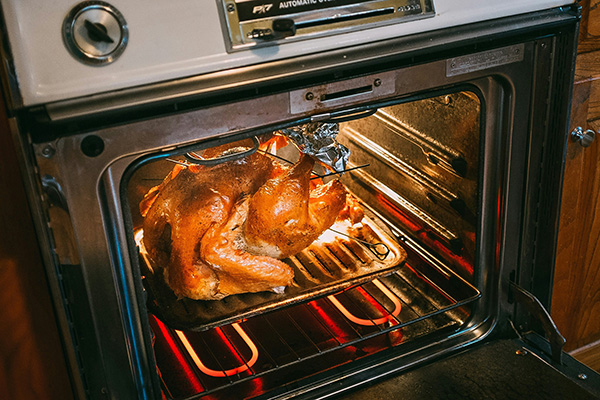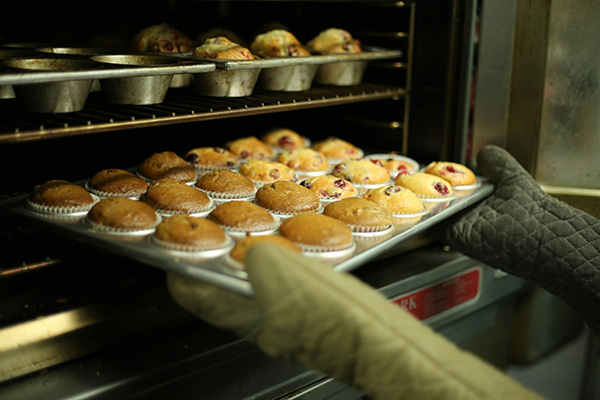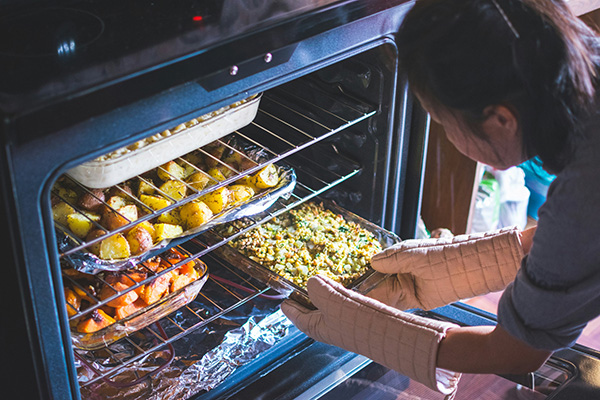Broiling and baking are two very similar cooking methods! Both use hot air inside an oven to cook food. However, there are notable distinctions between broiling and baking! Knowing these differences and understanding how to use your oven optimally will help you achieve textures and flavors that you would not be able to otherwise! In this post below, we will share the difference between broil and bake.
What Is Broiling?
Broiling is a cooking technique that uses direct, high-temperature heat at close proximity to cook food. The food is placed in a broiling pan or inside the oven's broiler itself, and high temperatures of 500 to 550 degrees Fahrenheit are used to sear the surface of the food quickly on an oven rack. The food must be placed close to the infrared radiation heat source, typically located at the oven's top or bottom. Convection ovens have a broil setting, and some models have a convection bake.
Benefits Of Broiling

Crispy Exterior: The higher temperatures can help you achieve textures and flavors that are hard to mimic through baking. Examples include charred vegetables, browned cheese, and a seared crust on steaks or pork chops.
Ideal for Melting and Browning: Broiling is an excellent method for putting the finishing touches on cooked foods. The proximity of the food to the heating elements provides an ideal environment for sugar to transform into caramel, enhancing the flavors of specific fruits and desserts like creme brulee. Additionally, broiling excels at achieving that coveted melted cheese effect on casseroles, au gratin dishes, or creating delectably browned and bubbling cheese toppings.
Quick Cooking: Direct heat via infrared radiation is very quick! The entire broiling method can take place in minutes.
Retained Juiciness: While broiling sears the outside of the food, it often retains moisture inside, resulting in juicy and flavorful dishes. This particularly applies to meats such as steaks, pork chops, and chicken breasts.
Caramelization and Flavor: The intense heat of broiling caramelizes sugars and proteins on the food's surface, resulting in a rich, savory flavor and appealing visual appeal.
No Need for Flipping: Unlike grilling, which requires flipping food to cook both sides evenly, broiling cooks from one side. This saves time and effort during cooking.
Disadvantages Of Broiling
Safety Concerns: Broiling uses higher temperatures that can pose a safety risk if not closely monitored. Food can burn quickly, resulting in smoke and potential fire hazards. It's crucial to monitor the cooking process closely.
Inconvenient: Broiling can be inconvenient, depending on your oven settings. You may need to purchase a broiling pan. Your oven model may have the broiler located, so it is difficult to monitor how the food is broiling visually.
Energy Consumption: Broiling uses the oven's top heating element, which consumes significant energy. It might not be the most energy-efficient cooking method for some types of food.
Limited Browning on the Bottom: Because broiling primarily cooks from the top, achieving browning on the bottom of the food can be challenging. This may be desired for certain dishes like pizza or bread.
Splattering and Smoke: Broiling high-fat foods or foods with marinades can cause splattering and smoke in the oven, which can result in more frequent cleaning and ventilation requirements.
Foods That Are Best Broiled
Because broiling relies on close proximity to a high heat source, it is the ideal cooking method for meat like roasted chicken shawarma. The high temperatures will quickly sear the outside of the food, trapping the moisture within that would otherwise evaporate if cooked more slowly.
Broiling can also cook vegetables or fruits, such as grilling. It creates a charred, crispy texture on the outside of the food. The quick blast of high heat will give broiled fruit a caramelized crust.
Many typically baked recipes will benefit from a short stint of broiling at the end of the cooking time. Casseroles or other dishes with a cheesy or crumbly top layer are ideal for broiling.
What Is Baking?

Baking is a cooking method by which food cooks that involves circulating hot air within a conventional oven. The entire oven heats up and surrounds the food with a hot, dry, indirect heat. The heat is typically generated from the bottom of the convection oven, but the entire oven is heated up and distributes the heat evenly. This ambient, dry heat cooks the food from the outside in. Baking is usually done at lower temperatures, typically ranging between 170 and 400 degrees Fahrenheit.
Benefits Of Baking
Controlled Temperature: Baking offers significant control over the cooking process. Whereas most broil settings on ovens consist of a simple on-off switch, baking allows you to control the oven temperature and the location of the baking racks inside the oven.
Even Cooking: When baking, dry heat is evenly distributed throughout the entire oven. This even heat distribution means that baking cooks food evenly.
Versatility: Baking can be used for various foods, including bread, cakes, cookies, pastries, casseroles, and more. This versatility makes it suitable for many sweet or savory dishes.
Minimal Hands-On Time: Many baked goods and casseroles require minimal hands-on time once in the oven, allowing you to multitask or prepare other meal components.
Easy Cleanup: Baking dishes are typically lined with parchment paper or greased, making cleanup relatively simple. This is especially true when compared to methods like frying or grilling.
Disadvantages Of Baking
Time-Consuming: Baking foods in an oven takes significantly longer than broiling, frying, or grilling. However, this can be a limitation when you require a speedy meal.
Potential for Dryness: Overbaking or excessive heat can result in dry, tough, or crumbly textures in baked goods. Proper timing and temperature control are crucial.
Requires Planning: Baking often involves preparation steps such as proofing dough, allowing it to rise, or chilling it before baking. This requires advance planning and may not be suitable for impromptu meals.
Energy Consumption: Baking typically involves heating an entire oven, which can consume significant energy and potentially increase utility bills.
Precise Measurements: Baking often requires precise measurements of ingredients, particularly in baking recipes. Deviating from the measurements can lead to inconsistent results.
Foods That Are Best Baked
The lower temperatures and slower baking time give the interior of a dish time to cook through while the exterior slowly browns (not burns). Baking is ideal for big dishes, such as whole turkeys or casseroles, where the entire dish must be cooked thoroughly before the outside burning.
Baking also gives time for an otherwise liquid dish to take on a solid structure without risking a burnt exterior. That's precisely why baked goods like cookies, bread, brownies, and pies turn out so well!
Broil Vs. Bake: In Summary

Baking and broiling are both cooking methods that employ dry, hot air to prepare food. Compared to various other cooking techniques, they share many similarities. Nevertheless, there are a few notable distinctions between them.
Temperature
Baking is done at lower and more controlled temperatures, typically ranging from 300°F (150°C) to 375°F (190°C). Baking allows for gradual and even cooking. Broiling uses high and direct heat, typically from an overhead broiler element in the oven, which can reach temperatures of 500°F (260°C) or higher. Indeed, broiling is known for its quick and intense cooking.
Heat Source
In baking, the heat is distributed from all sides of the oven, including the top and bottom heating elements. This surrounds the food with heat, promoting even cooking. Broiling primarily cooks food from the top, using the broiler element. It sears and browns the surface of the food quickly.
Cooking Technique
Baking is ideal for recipes that require slow, even cooking. It's commonly used for many dishes, including bread, cakes, cookies, pastries, casseroles, and more. Broiling is best suited for recipes that require rapid cooking and browning on the top surface of the food. It's commonly used for thin cuts of meat, poultry, fish fillets, vegetables, and dishes that benefit from a crispy or caramelized exterior.
Both broiling and baking have their uses in cooking food. Knowing the difference between baking and broiling allows you to cook foods using the optimal method and create flavors and textures that would otherwise be unachievable!
